What is the most important attribute of a documentarian?
Respect? Empathy? An unsentimental, if not occasionally brutal, honesty?
Ed Kashi – “A Period in Time: Looking Back While Moving Forward”
Dolph Briscoe Center for American History, 2025
Review by W. Scott Olsen
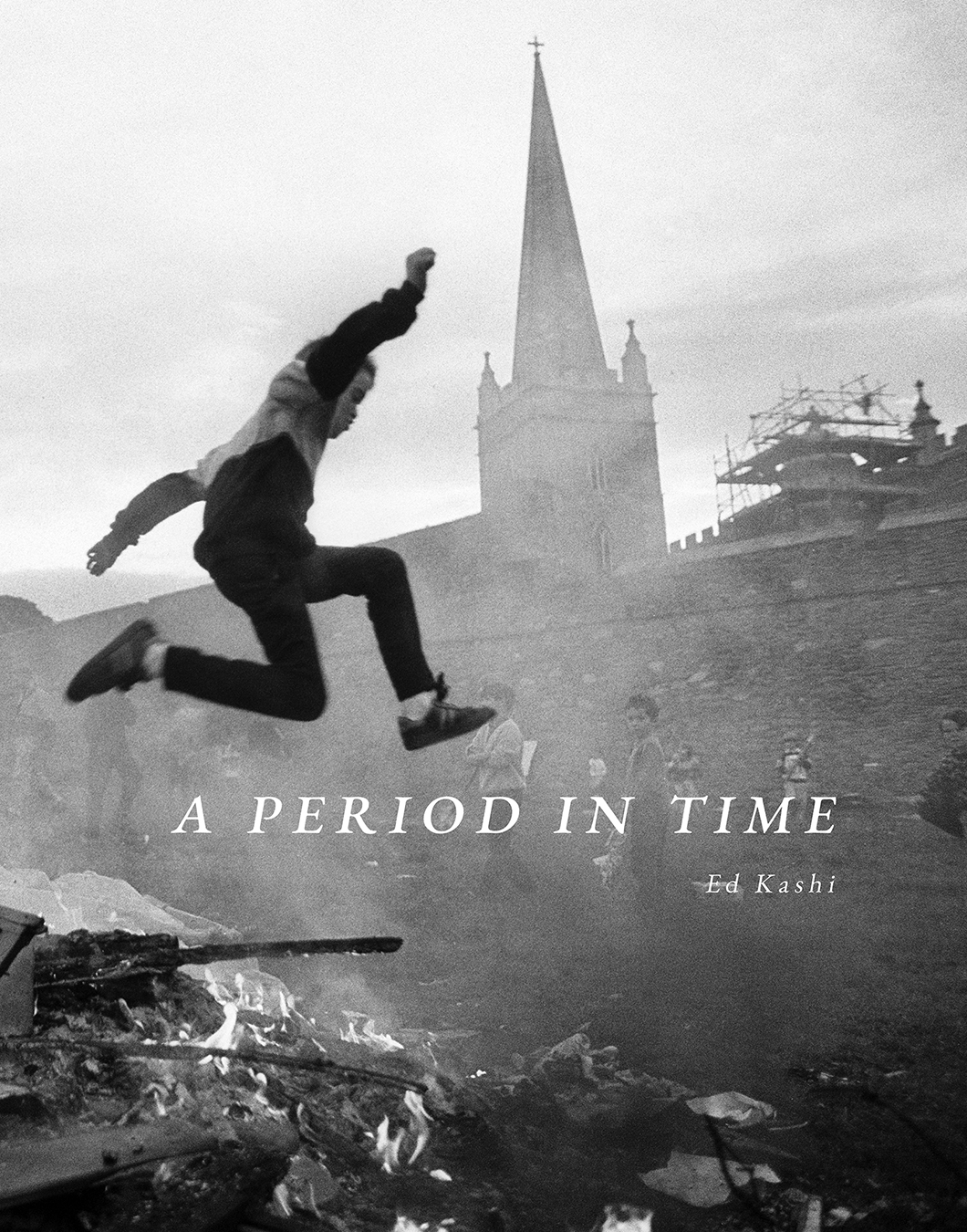
To be a documentarian is to capture some essence of humanity, not only for present understanding, but for the insight that perspective brings. A documentarian has, in the back of his or her mind, before stepping outside the door, a kind of intent toward longevity which informs every level of their work.
And for work, we assume holds a disinterested stance, what is the role of an artistic eye or approach? Is the documentarian allowed to have an artistic eye, a creative talent? Speaking photographically, when do such things as motion blur or soft focus become not only acceptable but necessary to convey something a bit more true about a situation?
To my mind, the documentarian is a distillation of nearly every other type of photography. Yes, it requires clarity, but it also requires a point of view. Yes, it requires a lack of bias but also an artistic ability to present an image in a way that carries gravitas, ethos, and sometimes pathos.

A worker moves props from Deutsche Film Aktiengesellschaft (DEFA), the iconic German film company, which opened in 1911 and was the first European studio to make sound pictures.
© Ed Kashi / from the book A Period in Time published by Dolph Briscoe Center for American History.
And just to be clear, I am making a distinction between the photo-documentarian and the daily photojournalist, although one group clearly includes the other. Few newspapers, however, will run images with light streaks and blur. The artistic palette board holds more options for the photo-documentarian.
I’m thinking of this because I have on my desk today a profound and remarkable and important book: A Period in Time: Looking Back While Moving Forward, by Ed Kashi. The book is a retrospective of Kashi’s more than 40-year career as a photojournalist and documentarian. The book is an anthology of still images, both color and black and white (note: Kashi is also famous for his work incorporating multimedia into visual storytelling), and this book should be on every photographer’s table.
Actually, it should be on everyone’s table, regardless of what they may do.
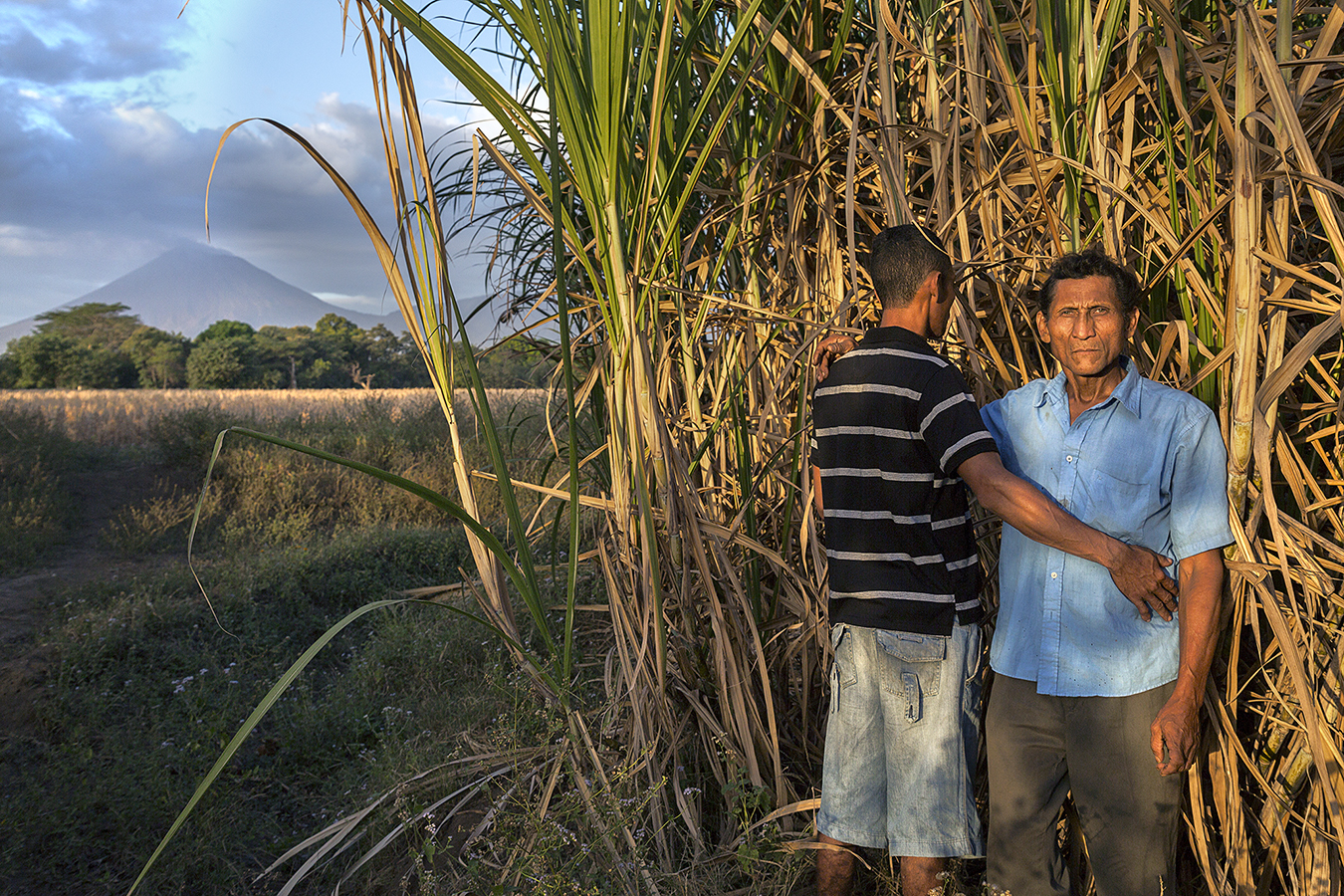
Walter Arsenio Rivera, 29, poses with his father, Antonio Arsenio Rivera, 58, in the sugarcane fields of Chichigalpa, Nicaragua, January 6, 2013. Both men suffer from chronic kidney disease of nontraditional causes and have since died from that disease.
© Ed Kashi / from the book A Period in Time published by Dolph Briscoe Center for American History.
In a preface, Don Carlson, Executive Director of the Briscoe Center for American History, begins with a quote by Kashi himself—
“Photographic archives are repositories of possibilities.”
That idea, just by itself, is mesmerizing. Carlton follows this by writing—
Visual storyteller and photojournalist Ed Kashi’s statement about photographic collections serving as “repositories of possibilities,” is an eloquent observation that an archive of photographic images can have the potential of being not merely a stagnant repository, but a dynamic way for images from the past to bear witness. Such an archive provides us with opportunities to look deeper at the world around us—as it has been, as it is now, and how it might be in the future.

Scenes inside the Reliance Hyper Mart, 2007, the largest retail store in India, and part of a growing trend
toward “big box” stores that sell everything from food and clothes to appliances and electronics.
© Ed Kashi / from the book A Period in Time published by Dolph Briscoe Center for American History.
This is an insightful opening to this collection, and dead-on true. A Period in Time begins with a section called “Early Works,” which holds images from 1977 to 1983, and throughout the book, there are sections demarcated by time. Each section begins with a small introduction about what Kashi was doing, what was going on in the world, and why he was there. Occasionally, there are short journal entries called Dispatches, which give a more personal look into Kashi’s heart and mind.
Long experience, taken as a whole, is a step toward perspective, and the result, in this book, is a feeling of Gestalt wisdom.

Scenes at the Kirkuk football stadium, where internally displaced Kurds from parts of Iraqi Kurdistan live, 2003.
© Ed Kashi / from the book A Period in Time published by Dolph Briscoe Center for American History.
Kashi traveled the world in his career. Northern Ireland, Vietnam, the Niger Delta, India, the Middle East, the Americas, and elsewhere found focus in his lens. And in every section of this book, his images articulate a situation, a quality of living, the nuances of everyday life. His work, as Kashi himself describes, is images of candid intimacy.
Going back to the idea of repositories of possibilities, what this collection asks is: How was this possible? Why was this possible? When was this possible? Who made this possible?
The answers matter to us today.
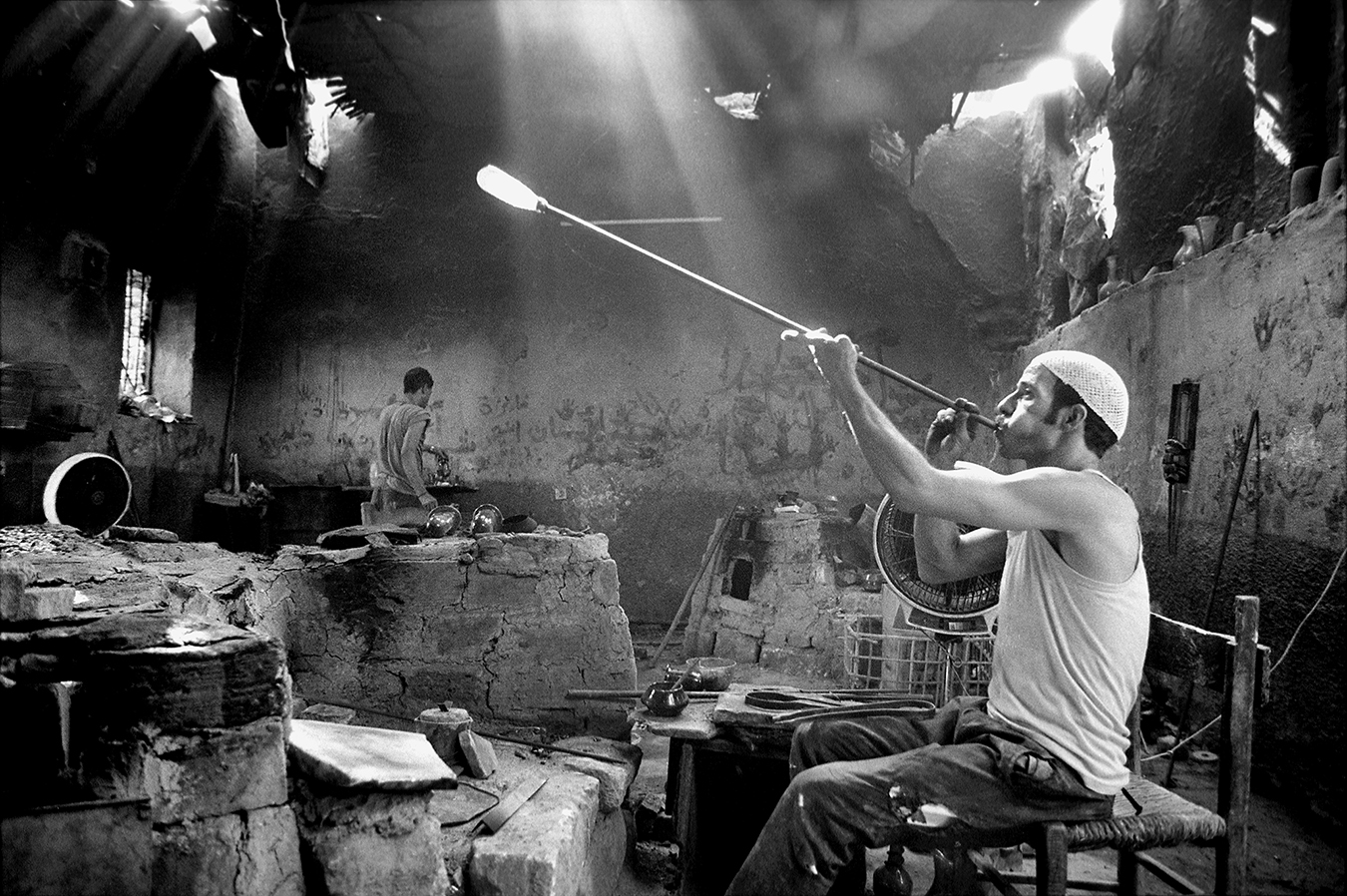
A glass factory is one of the many small industries that thrive in Cairo, Egypt’s City of the Dead, 1993.
© Ed Kashi / from the book A Period in Time published by Dolph Briscoe Center for American History.
In his own introduction, talking about his origins as a photographer, Kashi writes—
This form of expression [documentary photography], synthesized everything I cared about in life at that point, storytelling, art, journalism, connecting with people in need, and having the freedom to engage with the world and satisfy my curiosity. I had found my vocation. My calling. My life would be unrecognizable if I had done anything else.
A retrospective is sometimes an opportunity to celebrate an artist’s work. It is pleasant to listen to the old Rolling Stones, to look at the scope of Monet, to revisit Martha Graham. But I would argue a photographic retrospective like A Period in Time is a great deal more. It is a commentary upon the past, yes, but also a commentary upon the present, our ability to change or not, upon the implications the inertia of the past throws at the future.
A Period in Time is a big book and a heavy one, and yet I find it often in my lap. Sometimes I’m not turning pages at all because an individual image has arrested my imagination. It is impossible to look at any of the images of these books and not have a dual understanding. This is what it was like then. What does this mean for what it’s like now? Sometimes the distance between then and now is great. Sometimes it’s no distance at all. But every image here informs not only the present moment, but my understanding and thus participation in the present moment.
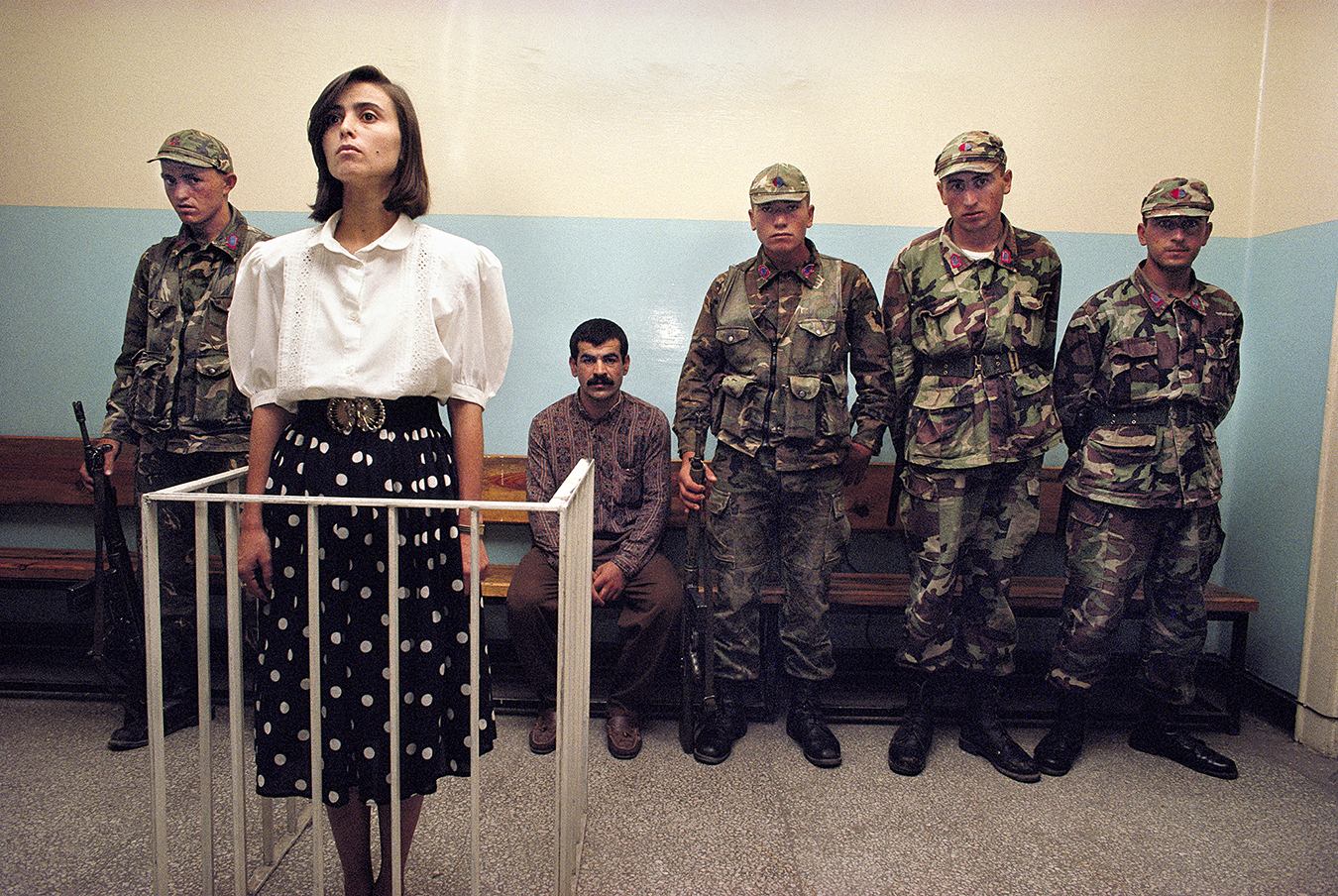
A Kurdish woman stands trial accused of being a member of the Kurdistan Workers Party, or PKK, in Diyarbakir, Turkey, September 16, 1991.
© Ed Kashi / from the book A Period in Time published by Dolph Briscoe Center for American History.
Kashi’s work captures an honesty and a vibrancy that make every page a narrative. The images are oftentimes hard, oftentimes politically or personally complicated, if not disturbing. But they are not indictments as much as they are revelations.
A Period in Time, which is really several periods in time, I have come to understand, is a retrospective, which really means now. Look at where we have been. But pay attention to the looking. You can feel now in the air. Through art and honesty, the past has been preserved so that this very afternoon can quiver.
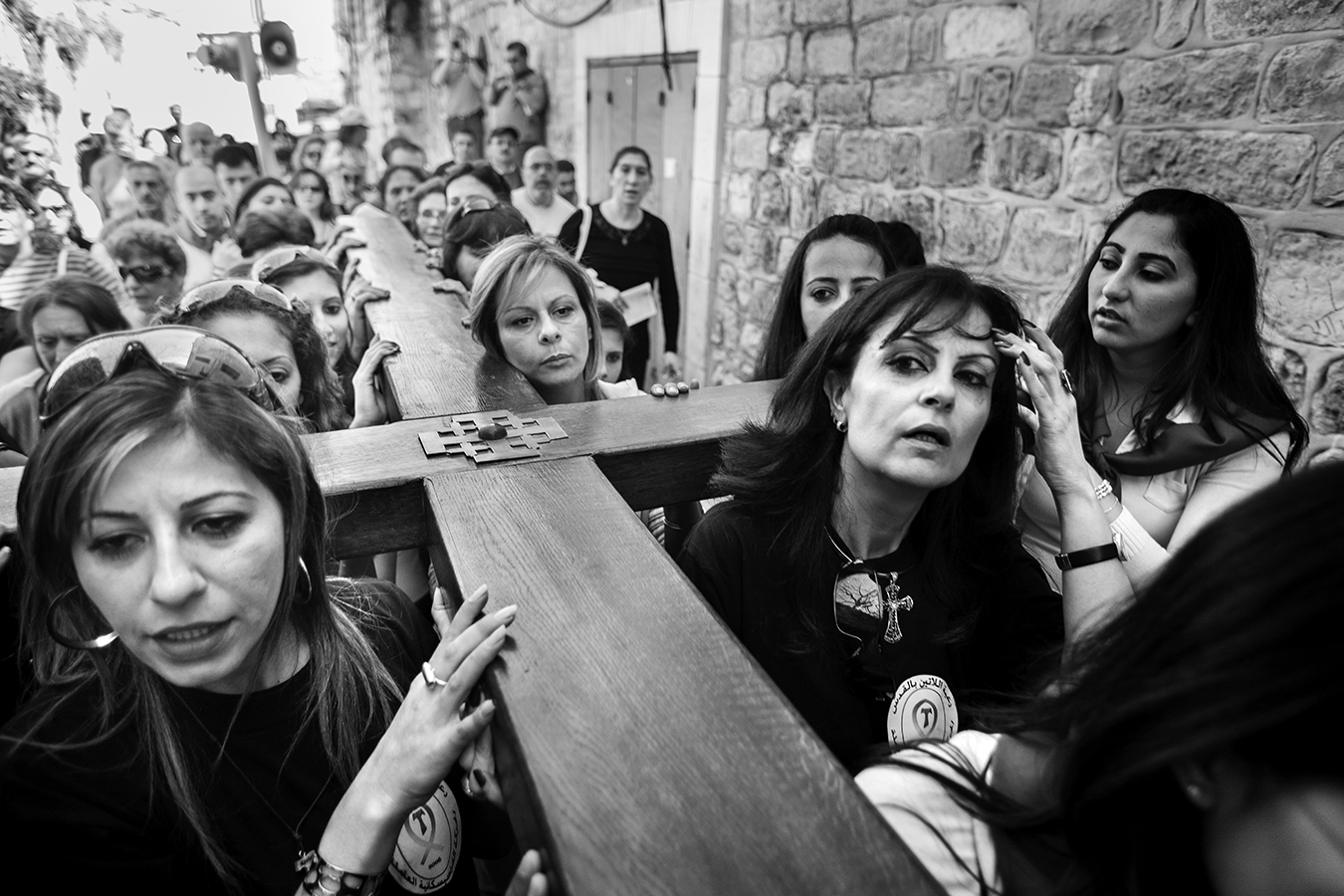
The Stations of the Cross procession for Catholic Easter in the Old City of Jerusalem, 2008. The women holding the cross are Arab Catholic Scouts.
© Ed Kashi / from the book A Period in Time published by Dolph Briscoe Center for American History.
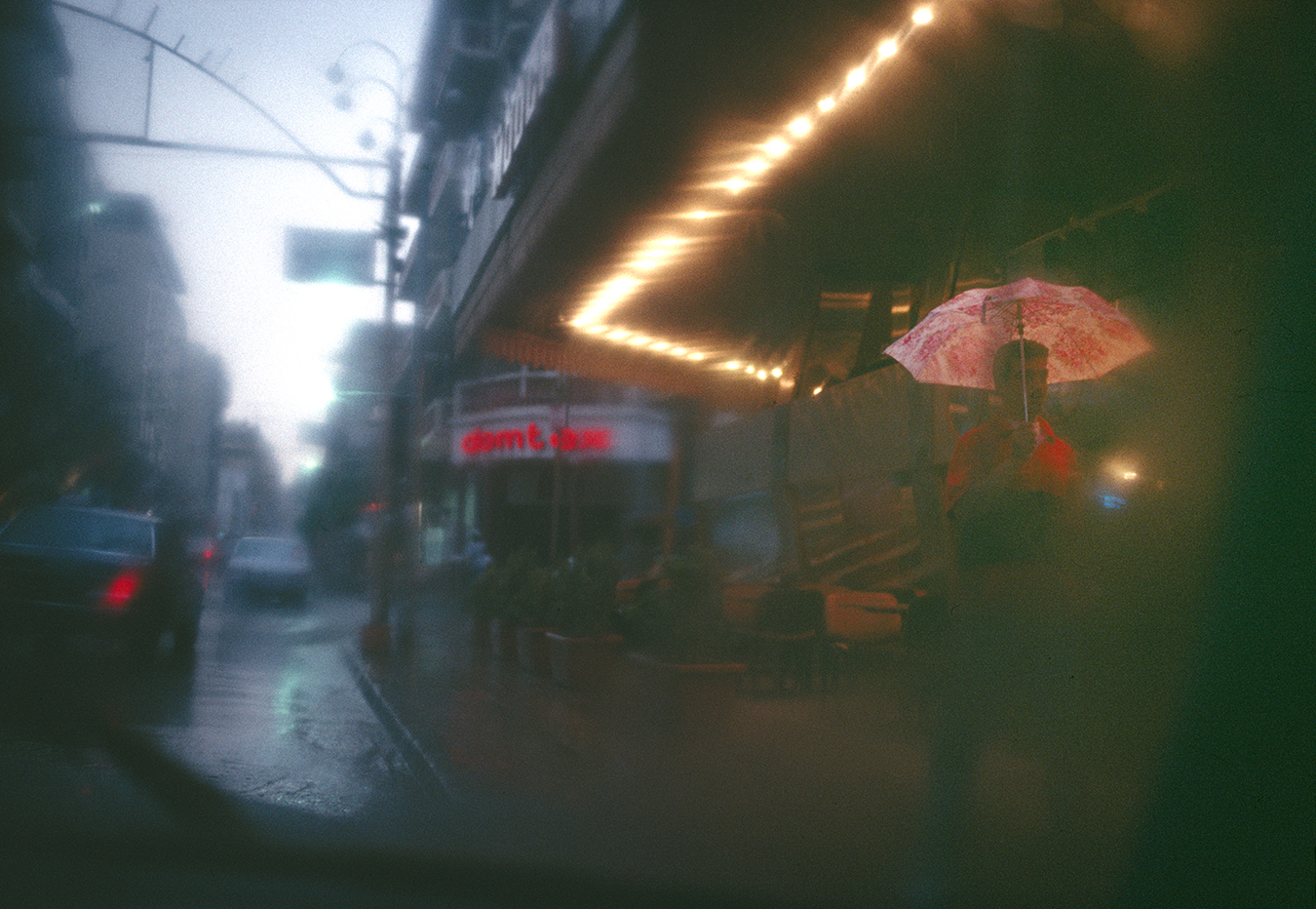
A rainy, dusk scene in West Beirut in the aftermath of Lebanon’s fifteen-year civil war, 1996.
© Ed Kashi / from the book A Period in Time published by Dolph Briscoe Center for American History.
A note from FRAMES: Please let us know if you have an upcoming or recently published photography book.





Wim Keessen
November 30, 2025 at 14:34
Hi,
Thank you for the in-depte review of the,new book of EdcKashi “A period in Time”.
My recommendation for an upcoming book is “Revérence” by Paul Nicklen. https://hemeria.com/en-eu/products/the-book-reverence
Paul Nicklen is a wildlife Photographer and his new book, currently for pre-order, is not only a collection of his 40 work, but also a filmstrip of nature and our environment.